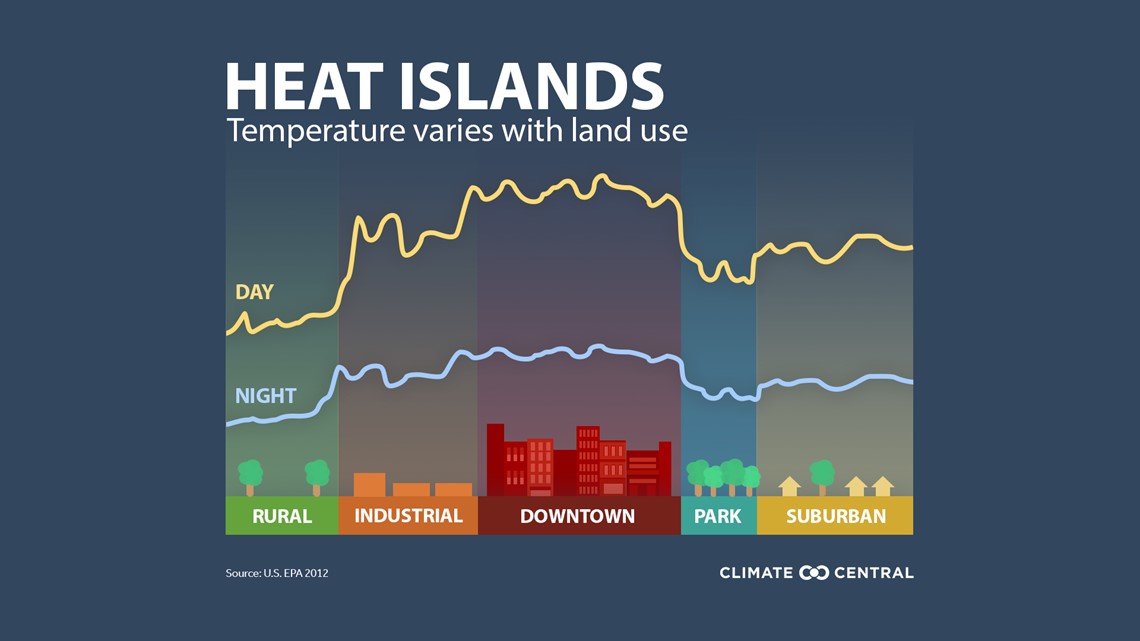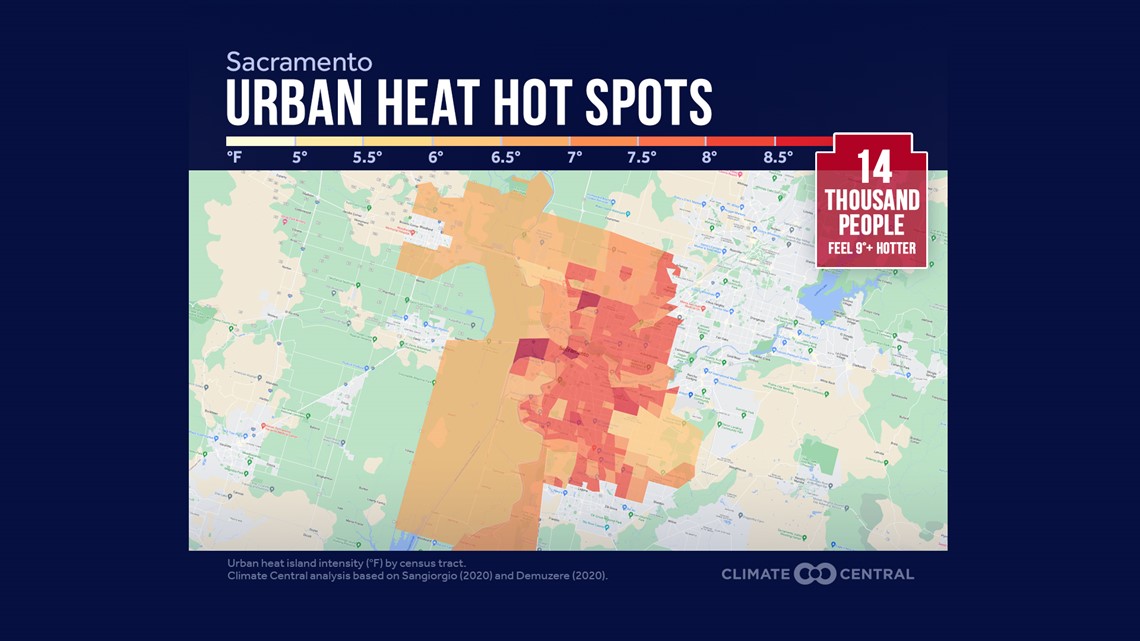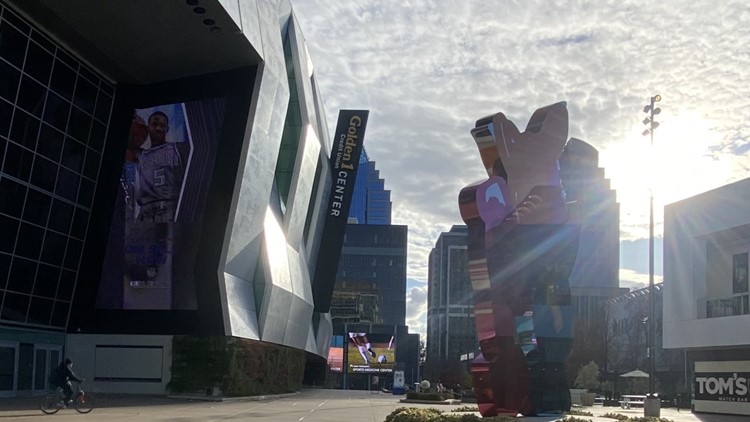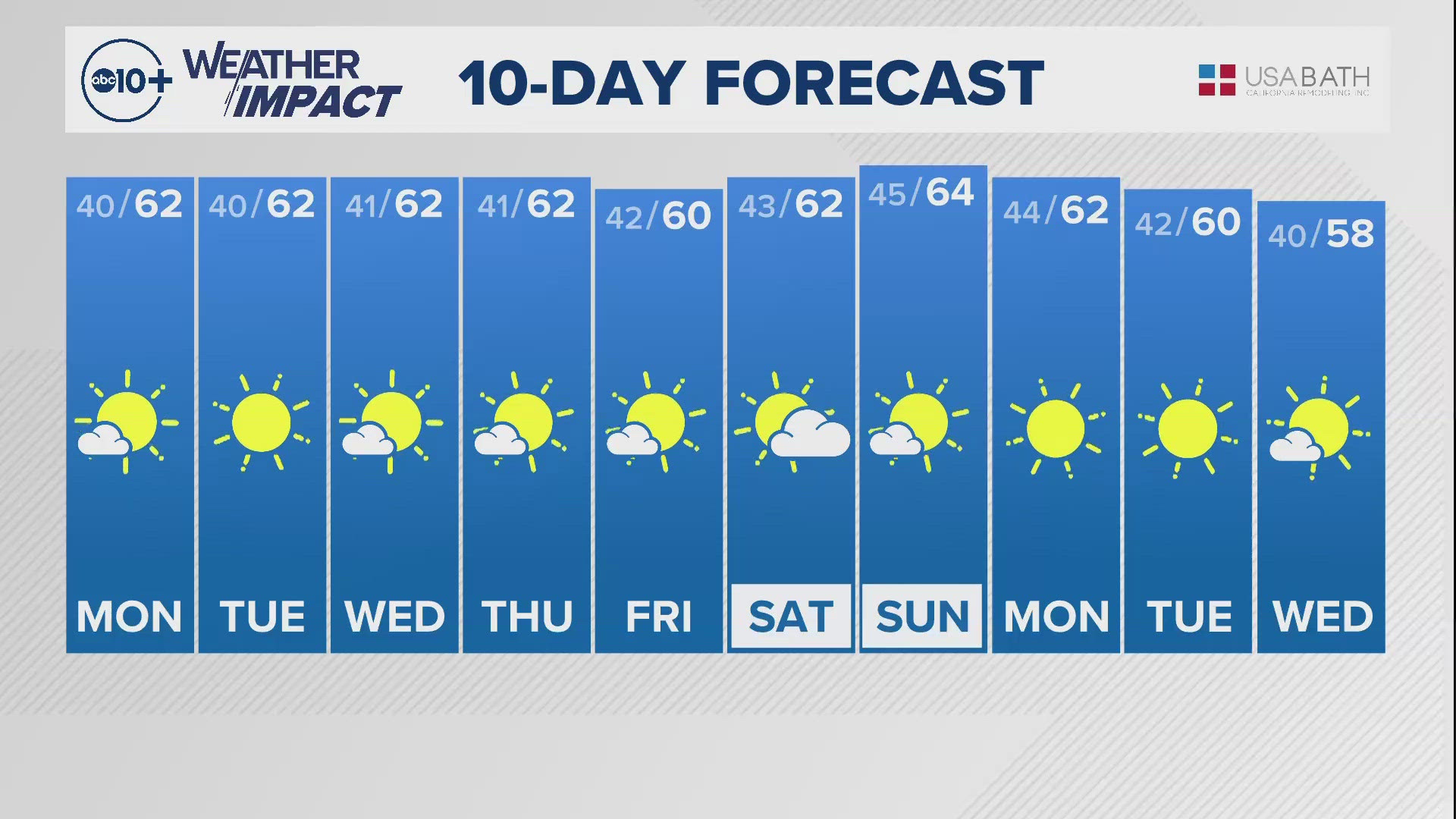SACRAMENTO, Calif. — A new study from Climate Central finds downtown Sacramento and Capitol areas are more than 8°F warmer because of city design. It's due to something called the 'urban heat island effect.'
"The urban heat island is basically referring to the phenomenon where the way that we build our cities can actually make the air around us hotter and can trap in heat," said Kaitlyn Trudeau, a climate scientist with Climate Central.
Climate Central conducts studies on climate and climate change, and they share their findings in easy-to-understand graphics and articles, aimed specifically towards the broadcast and news industry. In their most recent study, they looked at how much the urban heat island effect contributes to a city's warming.


The urban heat island effect is the result of the construction and design of heavily populated and urbanized areas. This not only makes for warmer afternoons but – more importantly – warmer overnights.
The study took into account several factors, including albedo, percentage of green space and population density. Albedo, the term for how reflective a surface is, weighted the heaviest in the rankings. Places like downtowns, industrial centers and large parking lots have a low albedo – meaning they aren't reflective and absorb a lot of daytime heat – compared to surrounding rural locations or even urban greenspaces, which have a higher albedo and reflect more of the sun's rays.
Other characteristics of a city including the width of streets, and building heights have a smaller relative influence on the urban heat island.
What the study found is almost two-thirds of Sacramento's population lives in an area where the urban heat island effect makes it on average 8 degrees Fahrenheit warmer.
"So it's a lot of heat we're talking about. It's not just a couple of degrees warmer, we're talking about eight degrees Fahrenheit warmer," said Trudeau. "The warmest parts of the city where we're seeing most of this is actually in the downtown area, so you can think of it like the Golden 1 Center and surrounding areas, even where the capitol is."


Sacramento's urban heat island effect is really concentrated in the city's urban core. Other hotspots in the area include the Natomas shopping center at I-80 and I-5, as well as the Harbor Boulevard area in West Sacramento.
"It's a problem," said Trudeau, "because it's exposing a lot more people to serious heat-related diseases and illnesses. It's making it a lot harder for people to withstand these big heat waves that we have. And most often it's people who are more impacted by climate change, people who don't really have the means to move, people who maybe don't have the kind of ability to adapt or do mitigation stuff [like] others. So it disproportionately impacts people who are very vulnerable."
The vulnerable population includes the thousands of unhoused living in these urban areas. It's a point not lost on Trudeau.
"It's also really hard for people who aren't housed. It's something that I think a lot of people kind of miss about this story, but something that's becoming, unfortunately, more common is the toll that it takes on people who don't have homes and who are stuck out in this heat, especially in urban environments where it's so much hotter."
Since we can’t just start from scratch and rebuild cities, reducing the impacts of the urban heat island requires careful planning and modification of existing city infrastructure.
"There are things that we can do," said Trudeau. "Things like planting more trees, rooftop gardens, rooftop green spaces, painting the roofs white so white will actually reflect the incoming solar radiation. And then also just thinking more deeply about the way that we build our cities."





















